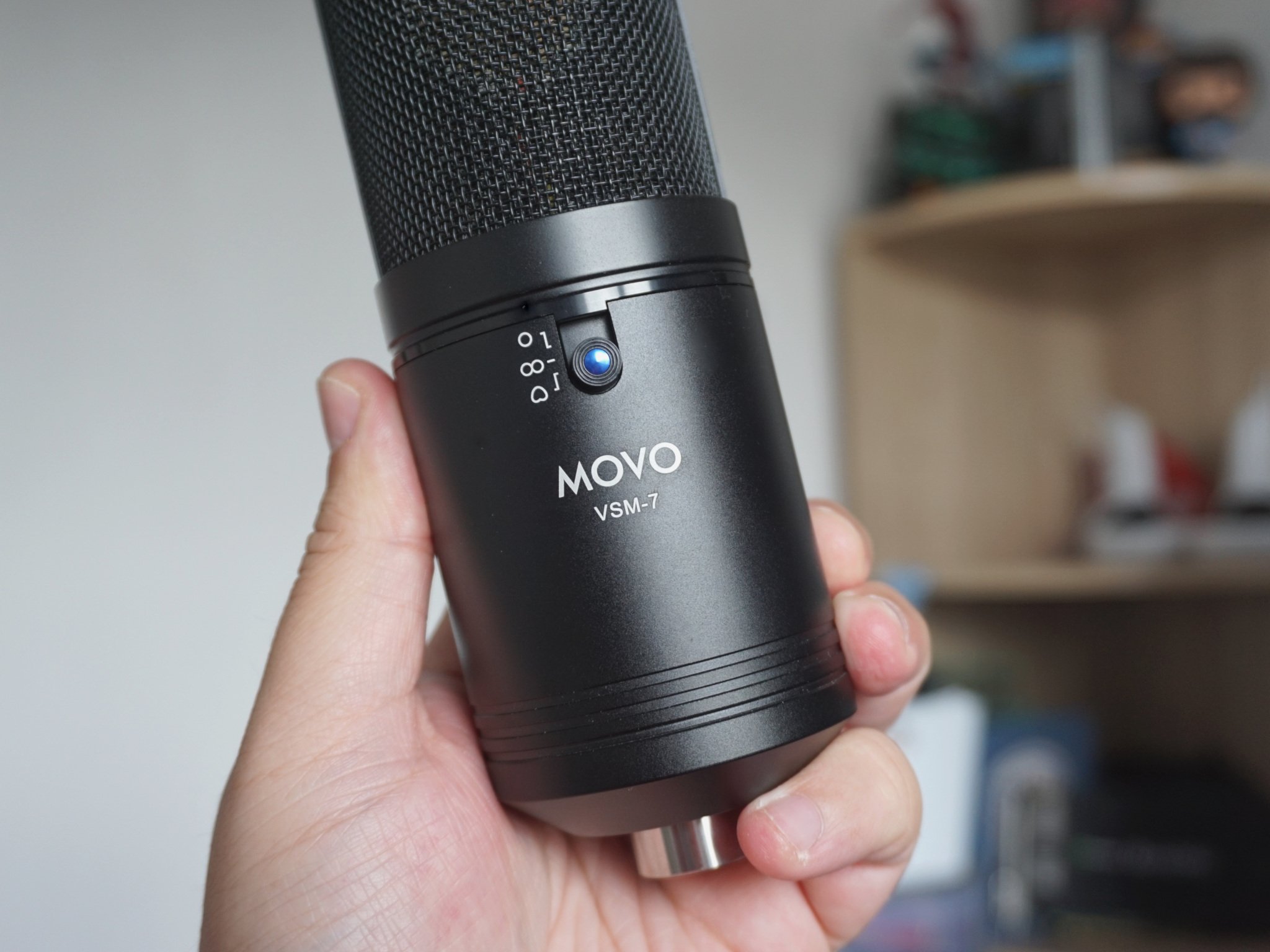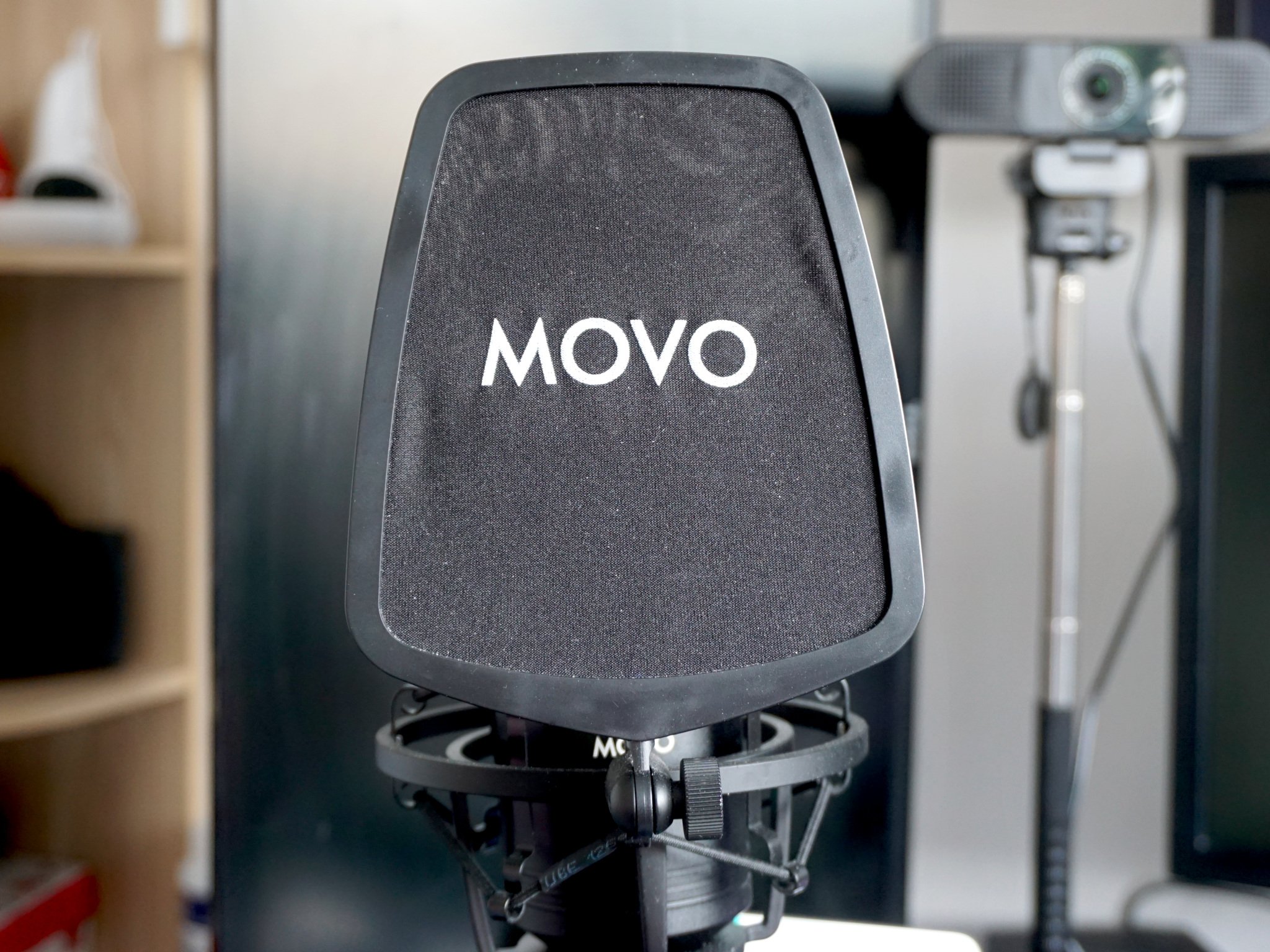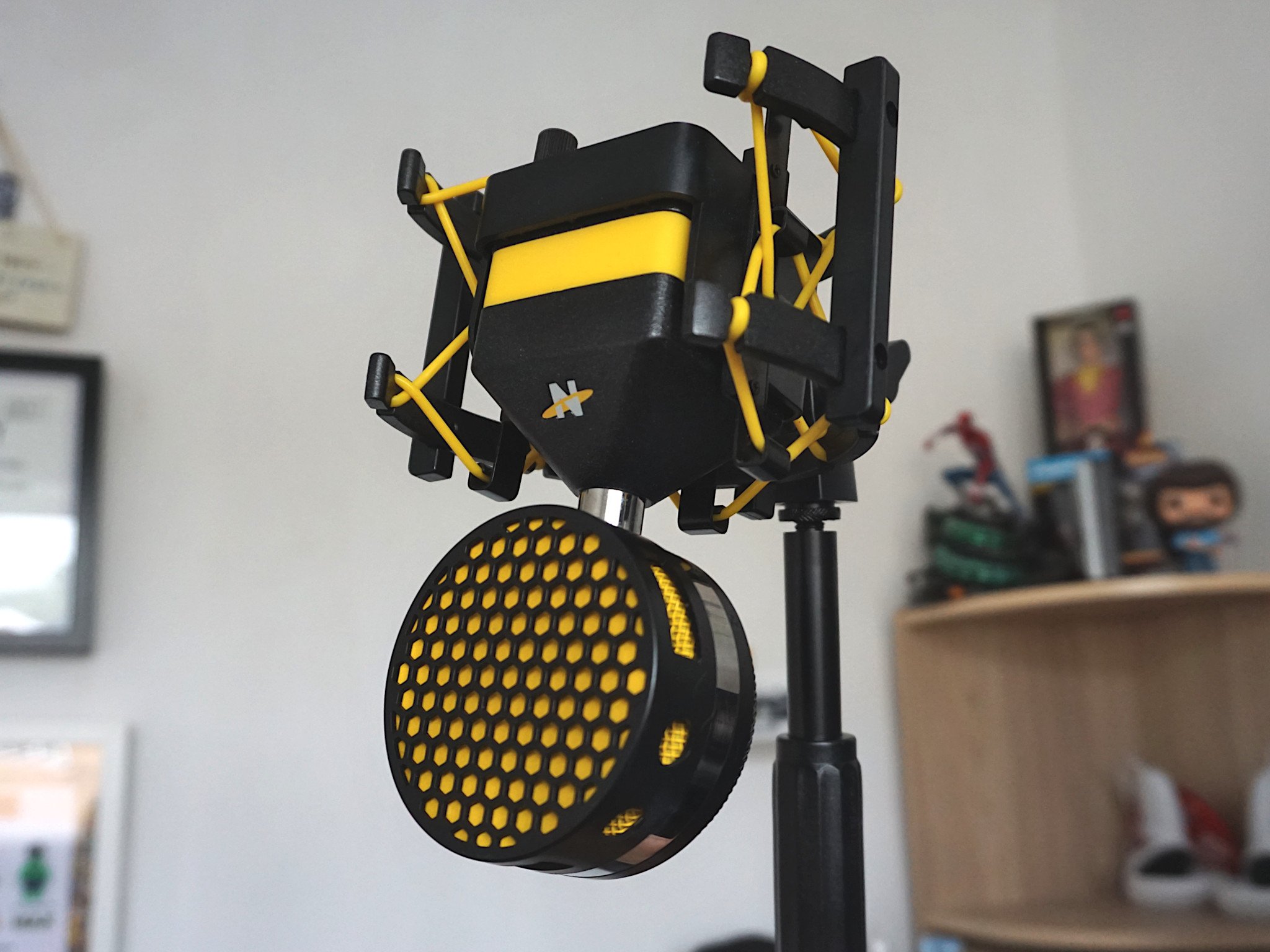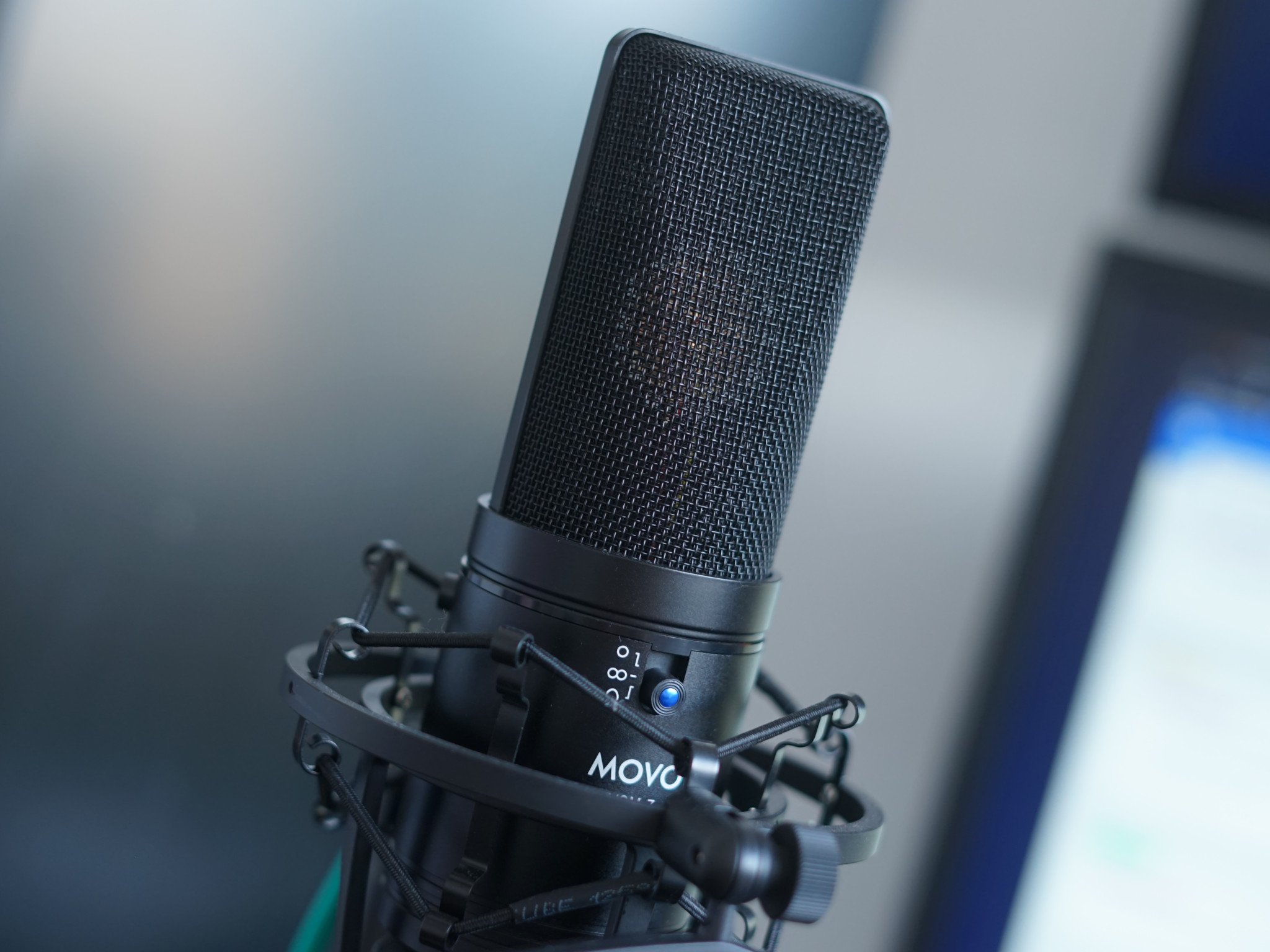Movo VSM-7 microphone review: A worthy alternative to the well-known brands
A good value alternative to the usual crowd if you're looking to up your audio game.

Buying the best microphone can be a tricky business, especially since there's no shortage of choice. If you're looking to get the best quality and control over your audio you're potentially considering a condenser microphone, which is the Movo VSM-7 comes in.
There are some pretty well-established players in this space, making it difficult to stand out. What Movo has here is a complete package, making it attractive to beginners and those who just want a good value setup.
Whether you're streaming or podcasting, or recording audio for any other reason, the VSM-7 is a worthwhile alternative to some of the more well-known brands.

Bottom line: A good value microphone kit with everything you need to get going, but the included cable and shock mount are a little disappointing.
Pros
- Quality, warm sound
- Easy to use hardware controls
- Multiple pickup patterns
- High pass filter
- Included pop filter
Cons
- Included cable seems a bit cheap
- Flimsy shock mount that doesn't sit straight
- -10db mode needs a hefty gain increase
Movo VSM-7: Price and availability
The Movo VSM-7 is available now in North America and Europe and can be bought on Amazon for $125/£108. The microphone comes as a full kit ready to go with an XLR cable, shock mount, and pop filter.
You will need a USB audio interface to use the Movo VSM-7 with your PC. For the purposes of this review, we're using the Audient Evo 4.
Movo VSM-7: What you'll like

The Movo VSM-7 is a condenser microphone with an XLR output, and as such will take its power from your USB audio interface. It supports both 24V and 48V phantom power, which means most current interfaces will be able to supply it with enough juice.
What makes the Movo VSM-7 particularly attractive is that it's a full kit in a box, ideal for beginners. You're going to need a pop filter and you're going to need a shock mount, and Movo just included them in the box so you don't have to worry about it. There's also the right cable, too, and while none of these items is perfect (more on that later), it's great to see all of this stuff has been thought about.
All the latest news, reviews, and guides for Windows and Xbox diehards.
Spec-wise, here's what makes up the VSM-7.
| Category | Spec |
|---|---|
| Acoustic principle | Condenser |
| Diaphragm | 34mm |
| Polar pattern | Cardioid Omnidirectional Bidirectional |
| Frequency response | 20Hz–20kHz |
| Impedance | 200 ohms |
| Connection | XLR |
| Power requirement | 24V or 48V phantom power |
| Weight | 812g |
Like all good condenser microphones, you get a choice of pickup pattern, ticking the three main boxes and each of them does what you would expect them to do. Most of the time you'll be in Cardioid mode with a polar pattern covering almost 180 degrees in front of the mic, but very little behind. This is the one to choose if you're streaming, too, giving you the best chance of minimizing your keyboard and mouse clicks.

Omnidirectional captures everything, and does a fine job of it, too, if you're in need of a microphone to attract all the audio in a room. Bidirectional has a more limited polar pattern, focusing on what's directly in front and behind of the microphone. Since I accidentally left this mode on while testing I can confirm it does its job really well, as evidenced by all the keyboard clicks recorded.
The Movo VSM-7 also boasts easy-to-use hardware controls. You'll have to remove the pop filter to change the pickup pattern, but on the sides, there are controls to enable the high pass filter, designed to eliminate low-frequency noise and the -10db pad which will drop the gain and allow you more headroom if you're struggling with distortion.
As a piece of hardware, the Movo VSM-7 is very good. It's a tad heavy, perhaps, so you'll need a decent boom arm or mic stand for it, but it has everything you need to get going and it feels like a quality product. But how does it sound?
Check out the sample below to hear for yourself. Used close to the mouth as is best with this type of microphone, the sound is warm and pleasing, and very clear.
Richard Devine · Movo VSM-7 sample
Movo VSM-7: What you won't like

The microphone itself is very good and while it's commendable that Movo included everything you need to get started, there are some quality concerns over the shock mount in particular. It just feels a bit flimsy, and this is no more evident than where you adjust its height and fasten it tight. It never sits straight due to how the screw literally just pinches everything together. It doesn't affect the microphone working correctly, but it's been driving me insane, and it doesn't even do up that tightly. If you push on the shock mount even lightly it will move.
Compared to the included shock mount on my Neat Worker Bee, the quality concern becomes even more evident. The Neat shock mount is a thick, well-made product with a substantial tightening screw that doesn't affect how the microphone sits. And that's on a microphone that costs similar money and weighs about the same.

The cable is also a bit cheap feeling. It works, and you get sound from it, but for how long is the question. For this review, I used my own Stagg 5-meter XLR cable, in part because the included cable wasn't long enough for my setup, but you can feel the difference in quality to even this affordable cable from the one in the box.
But, these are both issues that can be fixed. There's nothing fancy going on at the base of the VSM-7, so you should be able to use it with third-party shock mounts OK, and a better XLR cable doesn't cost much at all.
In terms of the mic itself, there's only really one point of contention and that's with the -10db mode. It's perhaps a little too much of a drop, considering how much extra gain it required to get back to comfortable audible levels. That could, in part, be down to the USB interface I've paired it with, but I feel like a -5db pad might well have been better overall. This is a microphone that will appeal to beginners, and I think that takes too much away to be truly useful to everyone.
Movo VSM-7: Competition

There is no shortage of condenser microphones on the market, and for the most part, the Movo VSM-7 stands toe-to-toe with them. One of the less obvious choices is the Neat Microphones Worker Bee, a similarly priced condenser mic that also comes with an included shock mount and pop filter. The Worker Bee is a bit of a hidden gem, and the quality hasn't gone unnoticed with the company being recently acquired by Turtle Beach.
The measuring stick for some time in this price range though has been the Audio Technica AT2020. It's available for a little less than the VSM-7 but without a shock mount, cable, or pop filter, so it loses out on overall value. But it's still considered one of the best in its class.
Movo VSM-7: Should you buy it?

You should buy this if ...
- You want a good quality, great value condenser mic
- You're in the market to up your streaming game
- You want everything in one box
You shouldn't buy this if ...
- You don't have a USB audio interface
- You need something portable
- You don't have a substantial stand or microphone arm to hold it
As a package, the Movo VSM-7 does represent excellent value, even if there are a couple of quality concerns with the accessories. Moving into the world of condenser microphones is worth it from an audio perspective, but it can be expensive. If you don't already have a USB audio interface handy, adding on that cost does raise questions over whether it's the right purchase for you, especially since there are some excellent quality USB microphones out there.
But condenser microphones are popular for a reason, and the rich sound quality you get with the VSM-7 is why. For folks who want total control over their audio and that demand the best quality, you're going to be shopping in this market.
The VSM-7 is a very good microphone, if quite large with all its add-ons attached and it's quite hefty, too. But for what you pay and how good it sounds, it's impossible not to be impressed with the Movo VSM-7.

Richard Devine is a Managing Editor at Windows Central with over a decade of experience. A former Project Manager and long-term tech addict, he joined Mobile Nations in 2011 and has been found on Android Central and iMore as well as Windows Central. Currently, you'll find him steering the site's coverage of all manner of PC hardware and reviews. Find him on Mastodon at mstdn.social/@richdevine
